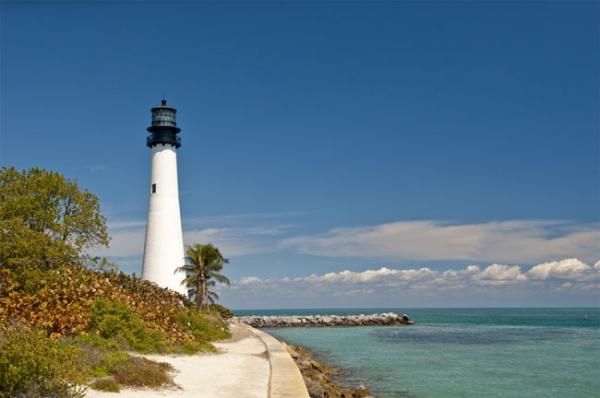
Best Beaches 2010: Oil Forces Florida Beach to Slip from Top 10

Tar balls are not a favorite among beachgoers. And with the oil slick creeping closer to shore along parts of the Gulf coast, there's a chance the gunk could become a reality along Florida's Panhandle. And already this tar-ball effect has bumped the Panhandle beaches off this year's Top 10 Best Beaches list.
This year marks the 20th anniversary of the Best Beaches list, put together by Stephen Leatherman of the Laboratory for Coastal Research, International Hurricane Research Center, which is part of Florida International University in Miami.
"The Panhandle beaches are some of the most gorgeous beaches in the world," Leatherman told LiveScience. "But because they are so close to the oil spill, I couldn't take the chance to put them on the list this year."
The 2010 list is due out Friday, as the Miami Herald reported this week, so it's not yet known which beaches are on it. However, Leatherman said that no other beaches were excluded from this year's list due to the oil effects.
"I had to make the decision a week ago," Leatherman said. "I'm feeling much better about the Panhandle [now], but the oil is south of them. If we did get some winds from the south it could push it up."
Best beaches
The survey includes 650 public beaches along the U.S. coast of the Atlantic, Gulf and Pacific.
Sign up for the Live Science daily newsletter now
Get the world’s most fascinating discoveries delivered straight to your inbox.
Leatherman uses 50 criteria for ranking beach quality, including sand softness, frequency of rip currents, size of waves, presence of shorebirds, water color, the presence of oil and tar balls, whether it's overcrowded, public safety, maintenance of grounds and other factors.
And Florida's Panhandle, the northernmost stretch of the state just above the Gulf of Mexico known for its crystal-clear water, has gotten the No. 1 spot more than any other geographic area. In 1994, Grayton Beach SRA, Fla., was the national winner; St. Andrews in 1995; and St. Joseph Peninsula State Park in 2002. The Panhandle beaches didn't make the list last year.
Here's were the Best Beaches of 2009:
1. Hanalei Bay (Kauai, Hawaii) 2. Siesta Beach (Sarasota, Fla.) 3. Coopers Beach (Southampton, N.Y.) 4. Coronado Beach (San Diego, Calif.) 5. Hamoa Beach (Maui, Hawaii) 6. Main Beach (East Hampton, N.Y.) 7. Cape Hatteras Buxton Lifeguarded Beach (Outer Banks, N.C.) 8. Cape Florida State Park (Key Biscayne, Fla.) 9. Coast Guard Beach (Cape Cod, Mass.) 10. Beachwalker Park (Kiawah Island, S.C.)
Florida will be spared
With Memorial Day weekend approaching, and many gearing up for swimming pools and public beaches to open, the Florida Department of Environmental Protection's (DEP) Florida Park Service is encouraging people not to shy away from the state's many beaches, including those along the Gulf coast.
"The Deepwater Horizon oil spill in the Gulf has not impacted any of Florida's shoreline," according to a DEP statement this week.
Leatherman agrees beachgoers should make it out to the Sunshine State's beaches. He thinks the west coast of Florida, from Tampa down to Naples will also likely be spared from the oil.
Another positive note: The northern part of the loop current, which ultimately flows past the Florida Keys to become the Gulf stream, is actually looping into itself and could just swirl around in the Gulf for a few months, Leatherman said.
"This does happen periodically," Leatherman said. "This would be great news, because if it stays out there and loops around it gives the oil plenty of time to evaporate and break down."
And when the list comes out, Leatherman said some people might be surprised. "Beaches they haven't seen on the list are going to be there," he said.
- 101 Amazing Earth Facts
- Gallery: The Most Awe-Inspiring Natural Wonders in America
Jeanna Bryner is managing editor of Scientific American. Previously she was editor in chief of Live Science and, prior to that, an editor at Scholastic's Science World magazine. Bryner has an English degree from Salisbury University, a master's degree in biogeochemistry and environmental sciences from the University of Maryland and a graduate science journalism degree from New York University. She has worked as a biologist in Florida, where she monitored wetlands and did field surveys for endangered species, including the gorgeous Florida Scrub Jay. She also received an ocean sciences journalism fellowship from the Woods Hole Oceanographic Institution. She is a firm believer that science is for everyone and that just about everything can be viewed through the lens of science.










